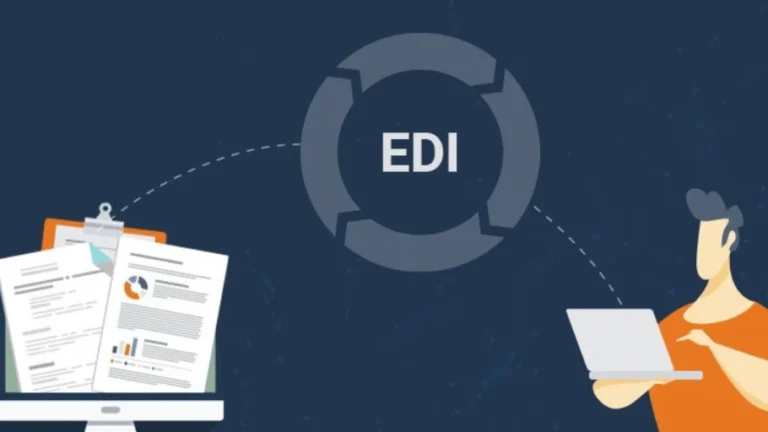How Will an Inventory Management Service Help my Business?
When properly implemented and utilized, inventory management services can provide a number of benefits:
- Greater Inventory Visibility: Inventory management services provide real-time updates on your stock, ensuring you are notified as soon as it runs low. It means you don’t have to worry about running out unexpectedly.
- Inventory Insights: Discover what products are selling well at specific times, allowing you to order more or less as needed.
- Theft and Problem Detection: If there is an issue caused by a serious oversight or mistake, you can spot it as soon as it happens, and not several months down the line when it’s too late to act. For much the same reason, inventory management services help to detect theft and thus reduce inventory loss.
- Order As Needed: You can see exactly what products are needed, so there’s no need to purchase more stock just because it’s time to reorder. It places less strain on your storage and means you’re not holding onto stock that could perish or simply isn’t in demand.

Key Aspects of Good Inventory Management Services
Inventory management services are all about taking stock, checking supplies, and ensuring the products are there when customers order them.
There are two types of inventory management systems:
Periodic Inventory Management Systems
Also known as “stock-taking”, this is a rather old-fashioned way of keeping inventory.
Inventory checks are performed at periodic intervals, usually several months apart. Companies assign a specific “stock-taking” day and the staff then check how much stock they have and how much it’s worth. They check all types of inventory (see below) and also consider sales figures and wastage.
Periodic inventory management is a tried-and-tested method that works for many small companies, but it’s not without its issues. It’s an imperfect process that’s prone to human error and it lacks the real-time updates provided by perpetual inventory management.
Perpetual Inventory Management Systems
Perpetual inventory management updates everything in real time. It is the preferred method for many online businesses, as well as all most major organizations. These methods allow for a greater degree of accuracy and provide useful and actionable updates regarding stock levels.
The Types of Inventory
There are four main types of inventory:
- Raw materials
- Work-in-process
- Maintenance
- MRO and Finished Goods
Understanding which of these you have is key to a proper inventory management process.
1. Raw Materials
2. Work-In-Process (WIP)
3. Finished Goods
4. Maintenance, Repair, and Operating Supplies (MRO)
Inventory Management and Demand Planning
Demand planning, also known as inventory forecasting, uses existing data to predict future trends. Stock can then be purchased based on these trends and the predicted demand they will bring.
For instance, a company may predict that a certain product will sell better due to an upcoming holiday or a social media trend.
Inventory management services can be used alongside inventory forecasting to accurately synchronize supply and demand and prepare for future swings. But of course, there is an element of risk with this. Demand planning is largely a gamble on a “what-if” scenario.
What is Inventory Turnover Ratio?
An inventory turnover ratio is a good measurement of effective inventory management. A company doesn’t want to be sitting on unsold stock for too long. But at the same time, it doesn’t want to run out of stock during a surge in sales.
- High ratios: A high ratio suggests that an item is selling well. But it could also be indicative of limited stock, suggesting you need to think about larger purchases. Very high ratios could lead to periods of low or no stock. You could be missing out on sales and may also be losing customers to competitors.
- Low ratios: A low ratio means you have more stock than you can sell. Supply outweighs demand, suggesting you bought too much or customers just lost interest. Low ratios can lead to high storage costs as well as spoiled and outdated items. You’re essentially paying to store items that will just degrade and cost you money.
How to Calculate Inventory Turnover
Your inventory turnover ratio is calculated by dividing the cost of goods sold by the average inventory value during any given period.
Check out the following example to see this inventory turnover formula in action:
- Cost of goods sold over 12 months = $500,000
- Average inventory value over 12 months = $200,000
- Inventory turnover ratio = 2.5
Essentially, you “turned over” your inventory 2.5 times during this period.
How we Use Salesorder Software to Help Manage your Inventory
Inventory management doesn’t need to be complicated. If the whole point is to simplify your business, then the software should be easy-to-use, and that’s exactly what you get with Salesorder.
Our software is a user-friendly, low-cost way to keep your inventory in check. You can learn the basics in days and deploy it within weeks. Training, consultancy, and after-sales support are all 100% free, and it’s built for companies of all sizes.
Contact us today to see what Salesorder can do for you.
FAQ
Is Order Management the Same as Inventory Management?
No, but they are closely related. Inventory management deals specifically with inventory, including ordering and stock tracking. Order management focuses on customer orders and ensures the process runs smoothly.
Read our guide on order management explained (this is another piece we have created, so this link will need to go live when it is uploaded) to learn more.
How is Inventory Accounted For?
An inventory is typically considered to be a current asset, which is something that will be sold or used within a short period of time. Before this asset makes it to the balance sheet, it needs to be accounted for. A company will typically use one of the following methods to do this:
- First-in-First-Out (FIFO): The oldest items in the inventory are sold first.
- Last-in-First-Out (LIFO): The latest additions are the first to go.
- Weighted-Average Costing: The cost of available goods is divided by the number of units. This method is used when inventory items are very similar.
What is a Good Inventory Ratio?
It depends on the industry, but between 4 and 6 is usually cited as a balanced ratio, one that doesn’t leave stock unsold for too long and also keeps up with demand.





